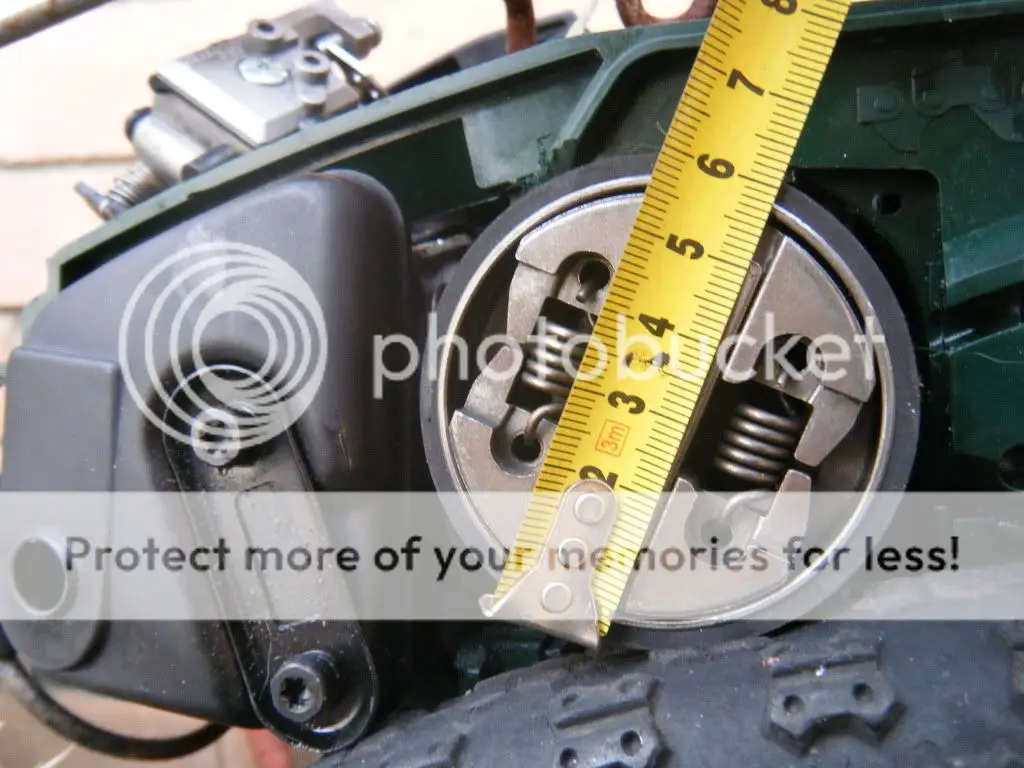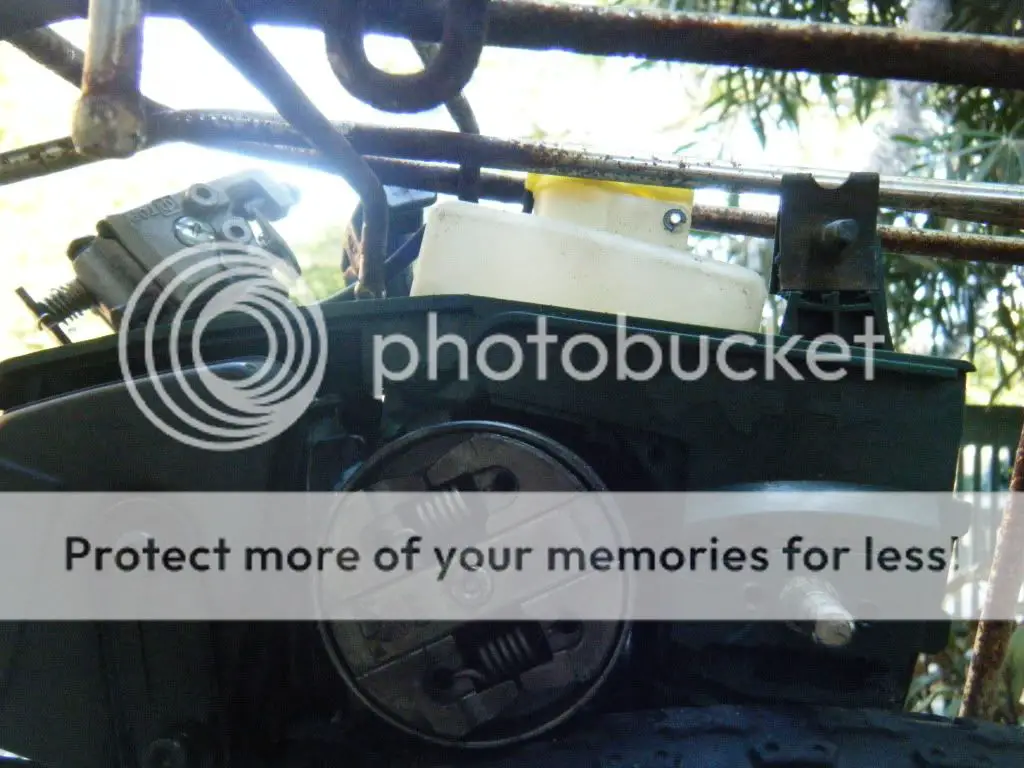ok i was reading through this forum yesterday, gaining knowledge
and getting ideas. alot of clever people on here and some wicked
builds. so i thought i would sign up and share my first one.
my next door neighbour bought one of them 80cc conversions and it
goes pretty good so i thought i would make one. i am using a small
(25.4cc) chainsaw i bought new. pulled all the eccess rubbish off
and eventally got it running. had automatic choke and other various
hoses and plumbing for the chain oil thingo and actually woldnt start
out of the box anyway it runs now and ive just got to get a sprocket
on the cultch.
i am copying my neighbours bike with the sproket on the spokes idea.
this wont be for taking off at all really. i will pedal up to speed then
nail the throttle for the most part and i should be off. its not for a
top speed race either and if i hit hills i will pedal.
this is mainly for transport and medium speeds and for me love of tinkering.
heres some pics of what im working with. i need to space my rear sproket
out from the spokes a bit as the chain wold hit the tyre atm.
its very early stages, i need to mount a rack (might cheat and get a s/h one)
a idler arm/ tensioner arm, and organinse the sprokets. notice the sproket is
on the same side as the original chain on the bike? thats the direction of the saw, i will
make it work. havnt seen many like that.
ive got the bug! comments welcome. cheers.
ok looks like theres no pictures. what a shame. dont know
what happened there. this was the intitial post
and getting ideas. alot of clever people on here and some wicked
builds. so i thought i would sign up and share my first one.
my next door neighbour bought one of them 80cc conversions and it
goes pretty good so i thought i would make one. i am using a small
(25.4cc) chainsaw i bought new. pulled all the eccess rubbish off
and eventally got it running. had automatic choke and other various
hoses and plumbing for the chain oil thingo and actually woldnt start
out of the box anyway it runs now and ive just got to get a sprocket
on the cultch.
i am copying my neighbours bike with the sproket on the spokes idea.
this wont be for taking off at all really. i will pedal up to speed then
nail the throttle for the most part and i should be off. its not for a
top speed race either and if i hit hills i will pedal.
this is mainly for transport and medium speeds and for me love of tinkering.
heres some pics of what im working with. i need to space my rear sproket
out from the spokes a bit as the chain wold hit the tyre atm.
its very early stages, i need to mount a rack (might cheat and get a s/h one)
a idler arm/ tensioner arm, and organinse the sprokets. notice the sproket is
on the same side as the original chain on the bike? thats the direction of the saw, i will
make it work. havnt seen many like that.
ive got the bug! comments welcome. cheers.
ok looks like theres no pictures. what a shame. dont know
what happened there. this was the intitial post














 take a hole saw drill attachment the size of the clutch bell and drill out a solid hockey puck
take a hole saw drill attachment the size of the clutch bell and drill out a solid hockey puck